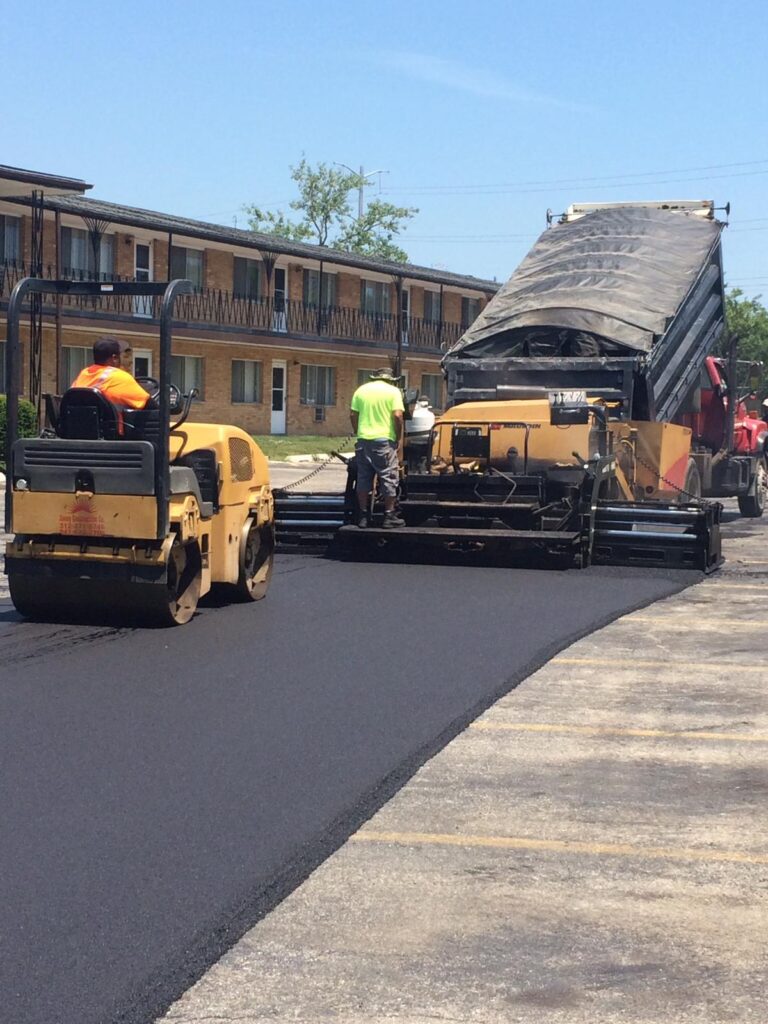Repair options for Asphalt
Crack Filling
Crack filling is when hot sealant is used to fill cracks in pavement to prevent water from doing any more damage. The sealant will adhere to the asphalt, keeping water and other natural elements from penetrating and exploiting the weakness in your pavement.
One of the biggest mistakes people make when it comes to cracks in their pavement, is waiting too long to get them filled. With time, cracks will only grow bigger. What was once a small crack can quickly become alligator cracking or even a pothole, compromising the integrity of your entire pavement surface?
Sealcoating
Sealcoating will protect asphalt from fuel, oil, water, weather and traffic wear. It’s a quick and easy way to help prevent damage and should be applied every 3-5 years, always in the warmer months. Sealcoating is not done to new asphalt pavement, but used to extend the lifespan of old pavement. Sealcoating leaves your pavement looking sleek and dark. This is the perfect solution if you are looking for a simple way to improve the appearance of your asphalt and protect it from the elements.
Benefits of Sealcoating
- Prolongs life of pavement
- Accelerates the melting of snow and ice
- Reduces long term repair costs
- Protects pavement from oxidation, oil, chemical spills and water penetration
- Enhances appearance of property
Milling
Milling is the process of removing the top layer of asphalt without disturbing the underlying sub-base. This is an excellent option if your sub-base is perfectly functional and only the top layer of your asphalt needs repair work. Milling can be completed at a fraction of the cost of a full reconstruction because only the top layer is removed and replaced. The entire process can be completed in a relatively short period of time.
Benefits of Milling
- Cost effective
- Fast project completion
- Recycling of old material
Patching
Patching is the process of filling in potholes. There are slight variations in patching methods but the general idea follows these five steps:
Step 1: Removal of the Damaged Pavement
Different tools will be used depending on the size and nature of the damage.
Step 2: Cleaning the Pothole
All debris must be removed, occasionally there may even be plant life poking through which must be disposed of from the root.
Step 3: Repairing the Foundation
Asphalt needs a sturdy base; otherwise, you’ll just have more problems in the future.
Step 4: Filling the Pothole
The type of asphalt used to fill potholes will depend on the weather and size of the pothole, typically hot or cold mix asphalt will be used.
Step 5: Tamping
The pothole will be slightly overfilled and then must be tamped down. Depending on the size of the pothole, different machinery or tools can be used for this.
Overlay
An asphalt overlay can be thought of as a large patching job over a stretch of asphalt. Overlay is typically used when existing asphalt is showing some signs of cracking and potholes, but not quite enough damage to warrant a full replacement.









